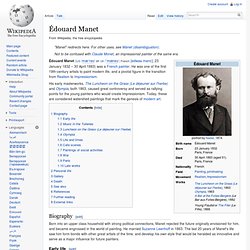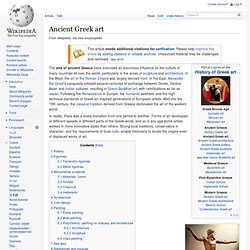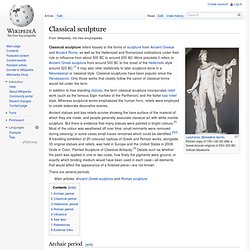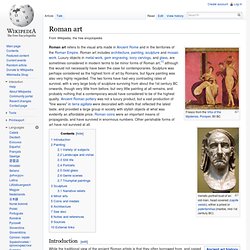

Figure Drawing - How To Information. Art Drawing - How To Information. Drawing. YOUrban. Immaterials: Light painting WiFi. The city is filled with an invisible landscape of networks that is becoming an interwoven part of daily life.

WiFi networks and increasingly sophisticated mobile phones are starting to influence how urban environments are experienced and understood. We want to explore and reveal what the immaterial terrain of WiFi looks like and how it relates to the city. Immaterials: light painting WiFi film by Timo Arnall, Jørn Knutsen and Einar Sneve Martinussen. This film is about investigating and contextualising WiFi networks through visualisation. It is made by Timo Arnall, Jørn Knutsen, Einar Sneve Martinussen.
Investigating WiFi In order to study the spatial and material qualities of wireless networks, we built a WiFi measuring rod that visualises WiFi signal strength as a bar of lights. Paintings - Samantha French. Ali Cavanaugh. Kerry Brooks. BRAD KUNKLE. Underwater Sculpture by Jason deCaires Taylor. Erik Johansson Photo. Michael Klein Paintings. Art Kitten. Life as an Artist- Jill Banks. WATERCOLORS AND WORDS. Knowing-The Art of Learning. Artist and watercolor teacher Jana Bouc's blog about painting, sketching, learning, and living an artful life in the San Francisco Bay Area.
Studio Art Direct Blog. Art and Degrees of Freedom. An Artist’s Journey. Arts Diary. AIDYs Poetry Blog. Better Living Through Design. JazJaz - Pop Culture For The Masses. Édouard Manet. Biography[edit] Born into an upper class household with strong political connections, Manet rejected the future originally envisioned for him, and became engrossed in the world of painting.

He married Suzanne Leenhoff in 1863. The last 20 years of Manet's life saw him form bonds with other great artists of the time, and develop his own style that would be heralded as innovative and serve as a major influence for future painters. Early life[edit] Édouard Manet was born in Paris on 23 January 1832, in the ancestral hôtel particulier (mansion) on the rue Bonaparte[citation needed] to an affluent and well-connected family. At his father's suggestion, in 1848 he sailed on a training vessel to Rio de Janeiro. From 1853 to 1856 he visited Germany, Italy, and the Netherlands, during which time he was influenced by the Dutch painter Frans Hals, and the Spanish artists Diego Velázquez and Francisco José de Goya.
Music in the Tuileries[edit] Luncheon on the Grass (Le déjeuner sur l'herbe)[edit] Creative review. Manjari sharma. Kopeikin gallery. Feature shoot. Design love fest. Art news. Artwork by anna rose. Dan morris. Kelly Borsheim. Art by borsheim. Hellenistic art. Art in Ancient Greece. The arts of ancient Greece have exercised an enormous influence on the culture of many countries all over the world, particularly in the areas of sculpture and architecture.

In the West, the art of the Roman Empire was largely derived from. In the East, Alexander the Great's conquests initiated several centuries of exchange between Greek, Central Asian and Indian cultures, resulting in Greco-Buddhist art, with ramifications as far as Japan. Following the Renaissance in Europe, the humanist aesthetic and the high technical standards of Greek art inspired generations of European artists. Well into the 19th century, the classical tradition derived from Greece dominated the art of the western world. Pottery[edit] Most Ancient Greek pottery was made for everyday use. In earlier periods even quite small Greek cities produced pottery for their own locale. The history of Ancient Greek pottery is divided stylistically into 6 periods: Figurines[edit] Terracotta figurines[edit] [edit]
Classical sculpture. Classical sculpture refers loosely to the forms of sculpture from Ancient Greece and Ancient Rome, as well as the Hellenized and Romanized civilizations under their rule or influence from about 500 BC to around 200 AD.

More precisely it refers to Ancient Greek sculpture from around 500 BC to the onset of the Hellenistic style around 323 BC.[1] It may also refer stylistically to later sculpture done in a Neoclassical or classical style. Classical sculptures have been popular since the Renaissance. Only those works that closely follow the canon of classical forms would fall under the term. In addition to free standing statues, the term classical sculpture incorporates relief work (such as the famous Elgin marbles of the Parthenon) and the flatter bas-relief style. Whereas sculptural works emphasized the human form, reliefs were employed to create elaborate decorative scenes.
Art of Ancient Egypt. Roman art. Roman art refers to the visual arts made in Ancient Rome and in the territories of the Roman Empire.

Roman art includes architecture, painting, sculpture and mosaic work. Luxury objects in metal-work, gem engraving, ivory carvings, and glass, are sometimes considered in modern terms to be minor forms of Roman art,[1] although this would not necessarily have been the case for contemporaries. Sculpture was perhaps considered as the highest form of art by Romans, but figure painting was also very highly regarded. The two forms have had very contrasting rates of survival, with a very large body of sculpture surviving from about the 1st century BC onwards, though very little from before, but very little painting at all remains, and probably nothing that a contemporary would have considered to be of the highest quality. Introduction[edit]
Ancient art. Refers to the many types of art that produced by the advanced cultures of ancient societies with some form of writing, such as those of ancient China , India , Mesopotamia , Persia , Egypt , Greece and Rome . The art of pre-literate societies is normally referred to as Prehistoric art and is not covered here. Although some Pre-Columbian cultures developed writing during the centuries before the arrival of Europeans, on grounds of dating these are covered at Pre-Columbian art , and articles such as Maya art and Aztec art .
Olmec art is mentioned below.